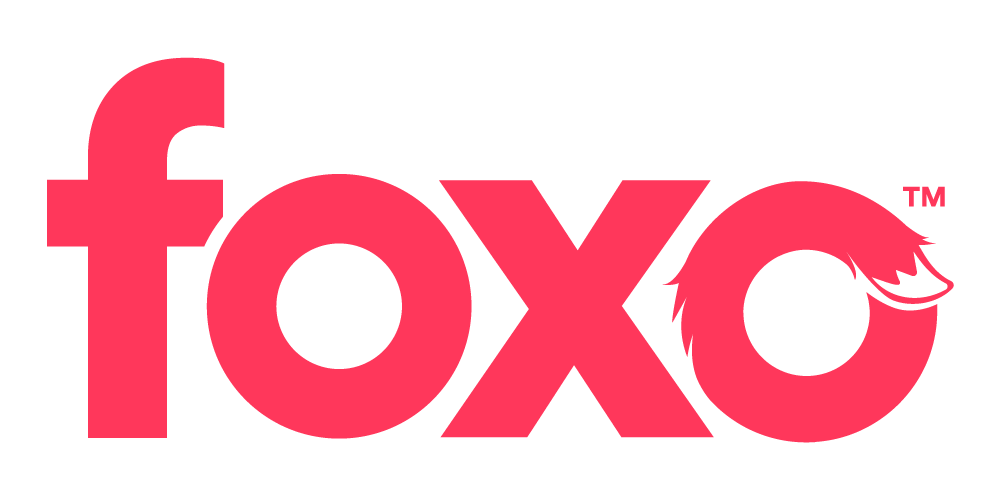Description

Bahmni

Foxo
Comprehensive Overview: Bahmni vs Foxo
Certainly! Let's dive into the comprehensive overview of Bahmni and Foxo.
Bahmni
a) Primary Functions and Target Markets:
- Primary Functions: Bahmni is an open-source hospital management system designed specifically for healthcare facilities in low-resource settings. It integrates various healthcare functions like electronic medical records (EMR), hospital management, and diagnostic systems. It provides functionalities such as patient registration, clinical visits, lab management, radiology, billing, inventory management, appointment scheduling, and more.
- Target Markets: Bahmni targets healthcare institutions in low to medium-income countries, especially in rural and resource-constrained environments. It’s often aimed at hospitals, clinics, non-governmental organizations (NGOs), and other similar healthcare setups that require comprehensive health solutions without the high costs associated with proprietary systems.
b) Market Share and User Base:
- Bahmni holds a niche market share given its specific focus on resource-limited settings and open-source nature. While exact market share details might not be heavily documented considering its open-source distribution, its impact is significant among NGOs and rural health initiatives across various countries, particularly in Africa and Asia.
c) Key Differentiating Factors:
- Open Source: Bahmni’s open-source model allows organizations to adopt, customize, and scale the software without high licensing costs.
- Integrated System: Bahmni provides a seamless integration of multiple hospital management functions within one platform.
- Focus on Low-Resource Environments: It is specifically designed to operate in settings with limited IT infrastructure and resources.
Foxo
a) Primary Functions and Target Markets:
- Primary Functions: Foxo is a communication and collaboration platform aimed at enhancing the coordination and efficiency of healthcare teams. It offers secure messaging, file sharing, task management, and team collaboration features specifically tailored for healthcare settings.
- Target Markets: Foxo targets a wide range of healthcare providers, including hospitals, clinics, and individual healthcare professionals. Its focus is on facilities looking to improve internal communication and patient coordination while ensuring compliance with healthcare data protection standards.
b) Market Share and User Base:
- Foxo is primarily used in regions such as Australia and may have a growing presence in other parts of the world. Its specific focus on healthcare communication gives it a specialized user base, but it’s not as widespread as major EMR or comprehensive hospital management systems. Therefore, its market share might be smaller compared to more broadly-used healthcare IT systems.
c) Key Differentiating Factors:
- Communication Focus: Unlike traditional EMR or hospital management systems, Foxo emphasizes improving communication within healthcare teams.
- Security and Compliance: Foxo is designed to ensure compliance with healthcare-specific data protection regulations, providing secure communication channels for sensitive information.
- Integration Capabilities: While focused on communication, Foxo often integrates with existing systems to enhance collaboration without overhauling current IT infrastructure.
Comparison Summary
- Bahmni vs. Foxo Objectives: Bahmni focuses on comprehensive hospital management in resource-constrained settings, whereas Foxo centers around enhancing internal communication and coordination in healthcare facilities.
- Market and User Base: Bahmni has a more defined user base in low-resource settings, while Foxo’s market is niche within healthcare communication, potentially limiting its broad market penetration.
- Differentiation: Bahmni’s open-source model and integrative approach contrast with Foxo's secure communication focus. Bahmni aims to serve all-encompassing operational needs, while Foxo sharpens the team collaboration aspect.
Both tools serve critical roles depending on the specific needs and resources of healthcare organizations, with Bahmni filling a comprehensive management role and Foxo enhancing existent communication frameworks.
Contact Info

Year founded :
Not Available
Not Available
Not Available
Not Available
http://www.linkedin.com/company/bahmni

Year founded :
2018
Not Available
Not Available
Australia
Not Available
Feature Similarity Breakdown: Bahmni, Foxo
To provide a feature similarity breakdown for Bahmni and Foxo, let's delve into each aspect separately:
a) Core Features in Common:
Bahmni and Foxo are both geared toward improving healthcare delivery, though they focus on different aspects. However, they do share some common core features:
-
Patient Management:
- Both platforms support features for managing patient records. This includes patient registration, tracking medical history, and managing demographic information.
-
Collaboration Tools:
- While serving different purposes, both support communication and collaboration within the healthcare ecosystem. They enable practitioners to exchange information and collaborate on patient care.
-
Integration Capabilities:
- Bahmni and Foxo can integrate with other healthcare systems and tools, facilitating data exchange and providing a unified view of patient information.
b) Comparison of User Interfaces:
-
Bahmni:
- Bahmni offers a comprehensive and modular user interface tailored for clinicians and hospital staff. The design is user-friendly but is focused heavily on functionality for clinical and administrative workflows. It is more traditional in appearance, with a layout that might seem complex to those not familiar with comprehensive EMR systems.
-
Foxo:
- Foxo has a more modern interface optimized for ease of communication and collaboration. It resembles a messaging and collaboration app, making it intuitive for users familiar with contemporary social or business messaging applications. The interface emphasizes real-time communication and is sleek and responsive.
c) Unique Features:
-
Unique Features of Bahmni:
- Comprehensive Healthcare Suite: Bahmni is a full-fledged EMR and hospital management system. It includes modules for clinical care, lab management, radiology, pharmacy management, and billing processes.
- OpenMRS and OpenERP Integration: Bahmni integrates deeply with OpenMRS (a medical records system platform) and OpenERP, providing a cohesive solution for resource-limited settings.
-
Unique Features of Foxo:
- Focus on Communication: Foxo distinguishes itself with its emphasis on real-time communication, secure messaging, and streamlined collaboration. It is designed to replace traditional, less secure communication methods like email or SMS within healthcare environments.
- Team and Workflow Collaboration: Foxo allows for the creation of teams, channels, and workflows specific to certain healthcare tasks or projects, improving coordination and response times.
In summary, while Bahmni and Foxo share some overlapping features related to patient management and collaboration, they fundamentally serve different purposes in the healthcare environment. Bahmni is more comprehensive as a hospital management system, while Foxo excels in communication and collaboration features for healthcare teams.
Features

Patient Management
Pharmacy Management
Reporting and Analytics
Clinical Documentation
Laboratory Management

Project Management
User-Friendly Interface
Security Features
Collaboration Tools
Best Fit Use Cases: Bahmni, Foxo
Certainly! Both Bahmni and Foxo serve specific niches within the healthcare technology sector, catering to different needs and industry verticals. Here’s a breakdown of their best-fit use cases:
Bahmni
a) For what types of businesses or projects is Bahmni the best choice?
-
Healthcare Facilities in Low-Resource Settings:
- Primary Care Clinics and Hospitals: Bahmni is an excellent choice for hospitals and clinics in low-resource settings, especially in developing countries. It is designed to meet the needs of healthcare providers with limited access to technology and infrastructure.
- Rural and Community Health Initiatives: Its ability to function offline and its open-source nature make it cost-effective and adaptable for rural healthcare projects.
-
NGO-Led Healthcare Projects:
- Non-profit and Humanitarian Organizations: Organizations providing healthcare services can benefit from Bahmni's comprehensive features that include patient management, clinical decision support, and inventory management.
-
Integrated Care Systems:
- Public Health Programs: Bahmni's ability to integrate with other systems and manage various aspects of healthcare delivery makes it ideal for government and public health initiatives that require a unified solution.
-
Customizable Healthcare Solutions:
- Custom Deployments: Its open-source platform allows customization, making it suitable for projects that require tailored solutions without high licensing fees.
d) Catering to Different Industry Verticals or Company Sizes
- Industry Verticals: Primarily targets healthcare providers, NGOs, and government health departments.
- Company Sizes: Suitable for small to medium-sized healthcare facilities, especially where resources are constrained.
Foxo
b) In what scenarios would Foxo be the preferred option?
-
Healthcare Communication and Collaboration:
- Hospitals and Multi-disciplinary Teams: Foxo excels in scenarios where secure and efficient communication between healthcare professionals is crucial. It streamlines communication across different teams and departments.
-
Telehealth and Remote Consultation:
- Telemedicine Providers: With capabilities like secure messaging and image sharing, Foxo supports telehealth services effectively, facilitating remote consultations and patient interactions.
-
Health Information Exchange:
- Cross-Institutional Collaboration: In environments that require swift information exchange across different healthcare institutions, Foxo is ideal for ensuring seamless communication and workflow integration.
d) Catering to Different Industry Verticals or Company Sizes
- Industry Verticals: It targets hospitals, clinics, telehealth service providers, and any healthcare setting requiring enhanced communication tools.
- Company Sizes: While scalable for larger organizations, it's also adaptable for small to medium-sized clinics focusing on improving internal communication and efficiency.
In summary, Bahmni and Foxo cater to distinct needs within the healthcare sector. Bahmni is best suited for low-resource healthcare environments in need of an open-source, comprehensive management system. In contrast, Foxo provides robust communication solutions for healthcare settings that prioritize secure and efficient collaborative workflows.
Pricing

Pricing Not Available

Pricing Not Available
Metrics History
Metrics History
Comparing teamSize across companies
Conclusion & Final Verdict: Bahmni vs Foxo
To provide a comprehensive conclusion and final verdict for Bahmni and Foxo, we need to consider the key aspects of both products, their functionalities, target audience, and overall value proposition. Here's an analysis based on available information:
a) Best Overall Value
Bahmni:
- Pros:
- Open-source and customizable for specific healthcare environments, particularly in resource-limited settings.
- Integrated system that covers multiple healthcare aspects including EMR (electronic medical records), laboratory, radiology, and billing.
- Strong community support and cost-effective for organizations with limited budgets.
- Highly suitable for hospitals and clinics in developing countries.
- Cons:
- May require significant IT expertise to implement and maintain.
- Customization and development might require professional services if in-house expertise is lacking.
- Sometimes less polished compared to commercial products, as it relies heavily on community contributions.
Foxo:
- Pros:
- Focused on healthcare communication, ensuring seamless, secure messaging and collaboration among healthcare providers.
- User-friendly with intuitive mobile and web interfaces.
- Strong emphasis on data security and compliance with healthcare regulations.
- Cons:
- Mainly enhances communication; lacks fully-fledged EMR features.
- Might be cost-prohibitive for smaller healthcare institutions or those with tight budgets.
- May require integration with existing systems, potentially complicating workflows.
Best Overall Value: This largely depends on the immediate needs of the organization:
- For a comprehensive, cost-effective healthcare management solution in resource-constrained environments, Bahmni offers better value.
- For organizations focusing on improving secure communication and collaboration, with existing systems in place, Foxo may provide the best utility.
b) Pros and Cons Summary
-
Bahmni:
- Pros: Comprehensive, customizable, cost-effective, strong community.
- Cons: Requires IT expertise, potential need for professional services, less polished interface.
-
Foxo:
- Pros: Strong communication focus, secure, easy to use.
- Cons: Limited scope regarding EMR functionalities, potential integration complexities, higher costs.
c) Recommendations
-
Evaluate Needs: Users should clearly define their organization's primary needs. If the goal is to streamline overall health management with an adaptable system in a resource-limited setting, Bahmni is highly appropriate. If the existing challenge is around secure communications and collaboration, Foxo should be given consideration.
-
Consider Resources: Consider the availability of IT expertise and budget. Bahmni requires a team that can handle open-source systems, whereas Foxo may require a budget ready to be allocated to a more polished but premium service.
-
Scalability and Future Growth: Evaluate if the organization plans to scale operations. Bahmni offers flexibility for scaling in terms of adding different modules. Foxo, while needing potential integration, may serve as a robust communication platform as the organization grows.
-
Pilot and Test: Potential users should run pilot tests. Try out both platforms in small settings to see which aligns better with day-to-day operations and user acceptance.
In conclusion, the decision between Bahmni and Foxo should be guided by the specific operational needs, budget considerations, and long-term goals of the healthcare organization. Both platforms offer unique strengths, and choosing the right one involves aligning its capabilities with the strategic vision of the healthcare provider.
Add to compare
Add similar companies




